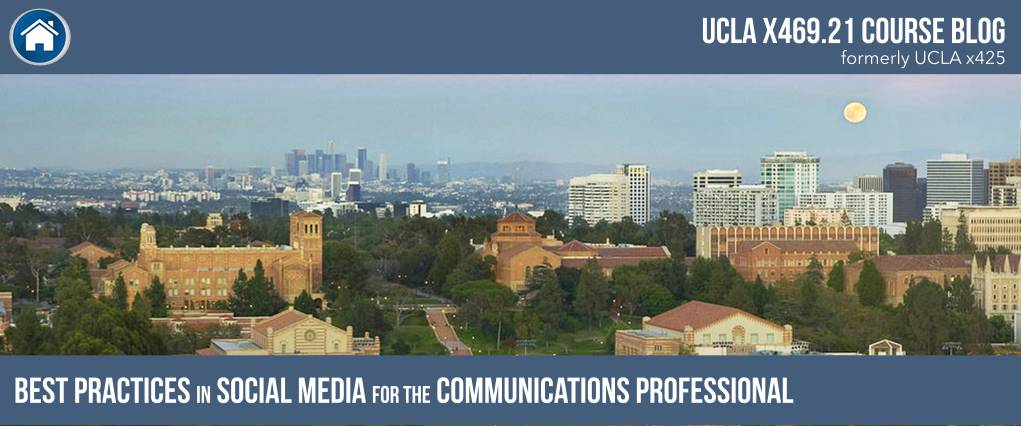
Week 1: A Conversation with Clint Schaff by Magali Gruet
By UCLA X469.21 Student Magali Gruet
5 keys to the art of content planning on social media
Our Week 1 guest speaker was Clint Schaff, Vice-President of Strategy & Development at the Los Angeles Times. He advised us to create a content strategy based on reaching our brand’s social media (as well as overall business) goals, and he suggested a five-step process for making the most of our social media efforts.
1 – Define your content themes
What is the most important theme for your brand? Is it to inform? Empower? Motivate? Support? Create a community? Each brand has different goals, and the theme for its social media effort should be adapted to achieve those goals. Those goals should also be measurable so that the results of the strategy can be evaluated. Measurement metrics could include brand awareness, sales, leads, etc., to name just a few.
2 – Allocate the breakdown
Decide on how the content will be broken down: how much of it should be allocated to each of the themes, and how that will be accomplished? For example, it may be 15% motivational posts through quotes, 40% informative posts through graphics, 20% promotional posts through copywriting, and so on. The total should be 100%.
3 – Map out the content
Come up with all the story hooks and beats you can anticipate. This can be done per month or even per year. A brand can plan to have a gift guide before the holidays, a professional event at a specific upcoming date, etc. With such information, you can look at your calendar and identify when you’ll need to have more content, and plan accordingly to fill in the blanks.
4 – Monitor results and revisit the strategy
You need to look at your results routinely to see if any of your posts underperform compared to your goals (see point 1). If so, you may want to adjust your allocation breakdown and/or the type of content.
5 – Create a playbook
The above four steps are the rules a brand should follow on its social media channels, and they can be explored further in the brand’s social media playbook. Such a document compiles the dos and don’ts, and therefore serves as a safeguard to protect the brand from malpractice. For example, should the brand take a stand on political issues? Should it jump on trends and current events? How will it respond to online attacks? Answering such questions will help the brand establish guiding principles that should be communicated to everybody who represents the company on social media and who has keys to the channels.

